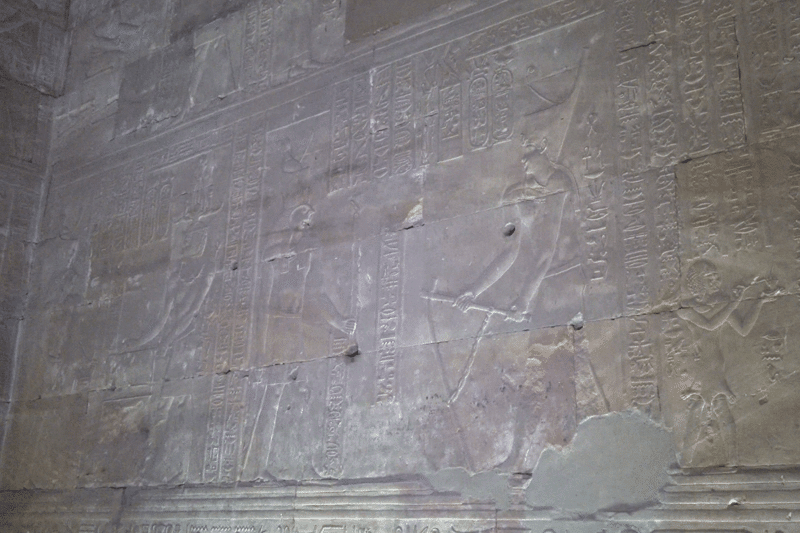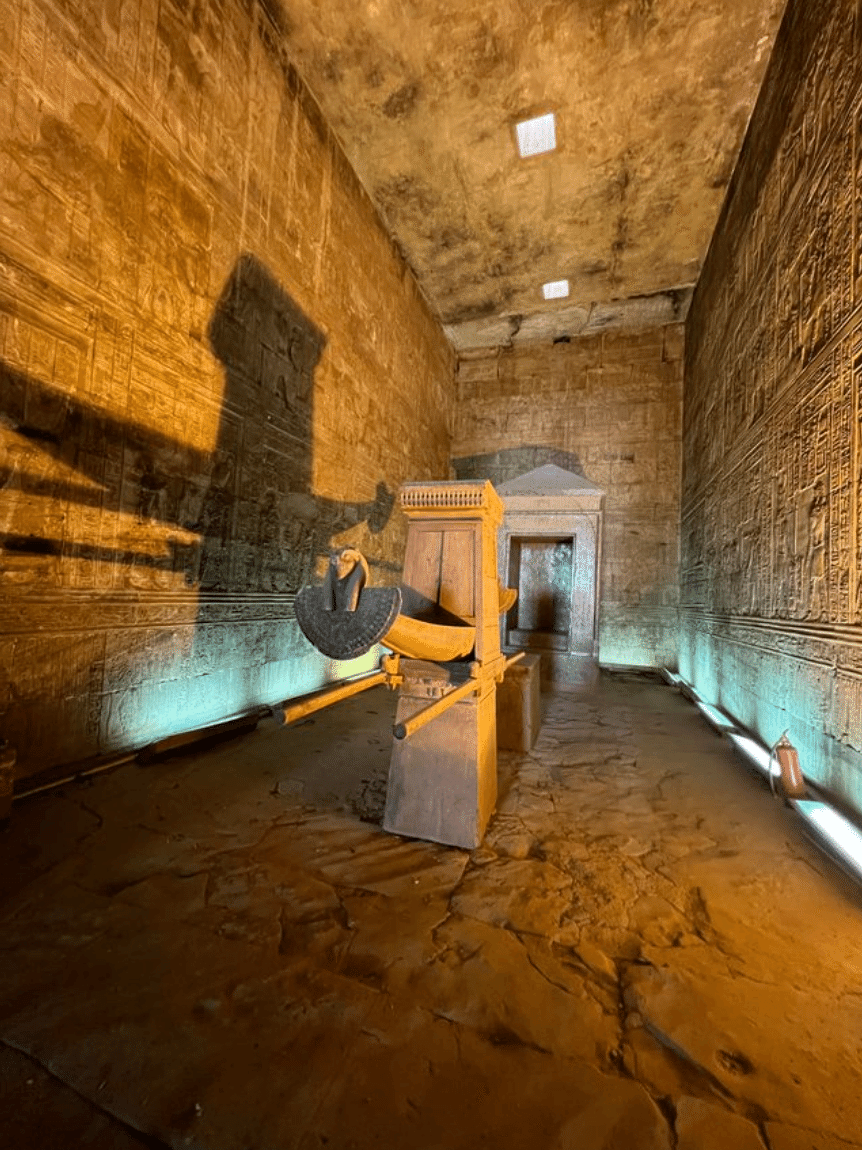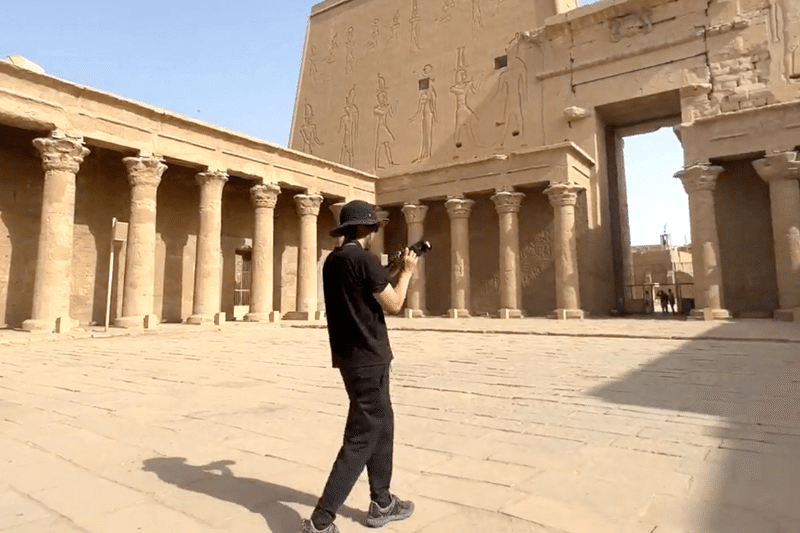
Temple of Horus 3D Scanning Project - WORLD SCAN PROJECT’s Challenge
Ancient Egyptian belief in the gods was deeply rooted in their views of life and death and their culture. This polytheistic belief system worshiped many gods to explain social order and the cycle of death and rebirth. Among these gods, one of the most revered was Horus, the falcon-headed god.
In this article, we will discuss the Temple of Horus, a site that conveys the mystery of Egyptian mythology, using the research findings from our World Scan Project (W.S.P.).

The Center of Horus Worship
The Temple of Horus at Edfu is one of the best-preserved religious structures of the ancient Egyptian civilization. It is known as a mystical place where the depth of worship to the gods can be deeply felt. Built on the west bank of the Nile in Edfu over about 180 years beginning in 237 BC, it played a crucial role as a center of worship.

The entrance to the temple, a massive first pylon 40 meters high, consists of two large towers with a wide opening between them leading into the interior of the temple. The walls of the first pylon are decorated with reliefs depicting the Pharaoh seizing his enemies, striking them down, and offering them to Horus. These reliefs symbolize the Pharaoh's power and dedication to the gods, while also indicating that this temple was dedicated to Horus.


Horus and Hathor
After passing through the first pylon, one enters an open courtyard lined with 32 columns. This courtyard also has reliefs related to Horus, but what stands out are the records of the festival with the temple of Hathor at Dendera.

Hathor, known as the goddess of love and beauty, is the wife of Horus, the symbol of royal power in Egyptian mythology. Typically, their statues are housed separately in the Temple of Hathor in Dendera and the Temple of Horus in Edfu. However, once a year, a grand festival took place where Hathor's statue was transported by boat to the Temple of Horus. This annual two-week reunion of the divine couple must have been a romantic and moving event for the ancient Egyptians.

In addition, the statues of Horus found throughout the temple are adorned with the crowns of Upper and Lower Egypt, symbolizing the royal authority over all of Egypt. Interestingly, the crowns were designed to be removable, suggesting that they may have been replaced with more elaborate decorations during ceremonies.

Ancient Egyptian "Ground-Breaking" Ceremony Connecting to Modern Times
The second hypostyle hall contains numerous valuable records about the "Ground-Breaking" ceremonies conducted at the start of temple construction. Especially interesting is the scene where the Pharaoh and Seshat, the goddess of surveying, determine the layout of the temple. Surveying ropes are stretched to align with Orion in the south and Ursa Major in the north, demonstrating the advanced surveying techniques of the ancient Egyptians.
Other reliefs show the Pharaoh performing the "foundation trench ceremony" by digging a trench for the foundation of the temple and making sun-dried bricks dedicated to Horus. These bricks are believed to serve as offerings similar to those used in ground-breaking ceremonies. The reliefs depict the unique construction style in which the sun-dried bricks are buried as part of the ritual before the construction of the superstructure begins.

The Epic Struggle for the Throne
Carved across the massive wall is one of the most famous stories in ancient Egyptian mythology: the battle between Horus and Set. This tale symbolizes the eternal struggle between good and evil, order and chaos.

Horus, the son of Osiris and Isis, was originally considered the rightful heir to the throne of the gods. However, Set, Osiris' brother, killed Osiris and attempted to usurp the throne, sparking a fierce battle for kingship between Horus and Set.
Their conflict escalated into a major war, with other gods intervening as mediators and supporters. The fighting was intense, and both Horus and Set suffered serious injuries, including the loss of an eye and other body parts. Eventually, a tribunal of the Ennead at Heliopolis declared Horus the rightful heir, allowing him to ascend the throne as King of Egypt. This epic struggle laid the foundation for the pharaohs' belief that they were the incarnations of Horus, and reinforced their divine right to rule Egypt.


The Sanctuary of Horus Temple
The statue of the great god Horus, who triumphed over Set and claimed kingship, was enshrined in the innermost sanctuary. At the time of its construction, the sanctuary had large doors and was not open to the public. However, during joint festivals with the Temple of Hathor, the sacred statue of Horus was carried to Dendera on a portable shrine.
Behind the sacred image stood a granite shrine called "Naos", which was built by Pharaoh Nectanebo II. Although the Temple of Horus was built during the Ptolemaic period and features a mixture of Greek and Egyptian decoration, the Naos, created by the local Pharaoh Nectanebo II, stands out for its distinct presence within the temple.

Bringing the World, the Future, and Curiosity Closer
Today, the Temple of Horus serves as a vital portal for tourists and scholars from around the world to experience the sacredness of Egyptian mythology. Its grand architecture and intricate reliefs allow visitors to embark on a timeless journey, witnessing the intersection of faith and architectural skill.

To preserve the Temple of Horus from weathering, the World Scan Project is conducting 3D scans to ensure that the ruins are meticulously recorded. These 3D scans will be invaluable for restoration efforts and will allow the temple to be recreated in VR and the metaverse, enabling people around the world to virtually visit Egypt's heritage sites. If you are interested, please follow and support the activities of the World Scan Project.

Please also check out this video about the Temple of Horus.
